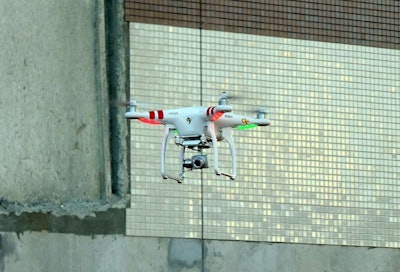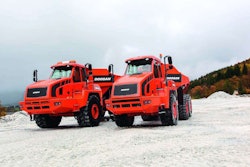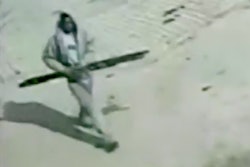 The DJI Phantom II is a lightweight drone that can be piloted or set on a course it flies by itself.
The DJI Phantom II is a lightweight drone that can be piloted or set on a course it flies by itself.Construction companies that hope to one day use drones and Unmanned Aerial Vehicles (UAVs) for surveying or to gather data on the jobsite, will likely have to go so far as making sure the pilots of those small aircraft have a license and have had considerable experience in the cockpit of a manned aircraft as well.
That’s if a new report from the Wall Street Journal pans out. The Journal spoke with “people familiar” with the Federal Aviation Administration’s upcoming commercial drone regulations who said the rules would likely require pilot certifications testing not only proper knowledge of unmanned aircraft, but would also require “dozens of hours flying manned aircraft.”
RELATED: FAA won’t issue commercial drone regulations until 2017 or later
The Journal‘s anonymous sources also said that the commercial drone rules would keep the flying height of these aircraft at the current 400 feet, as was established by a list of guidelines released in 1981 for “model aircraft.” The rules would also limit flights of drones to daylight hours and require drone pilots to keep the aircraft within what the FAA calls a “visual line of sight.” This requires the operator to make sure they can see the drone with their natural sight at all times, barring the use of binoculars, night vision goggles and the virtual reality goggles that have become popular with drone pilots in recent years since they give a first-person view of the flight.
The Journal reports that the agency will also group all drones that weigh less than 55 pounds under one set of rules. Many in the industry had hoped that smaller drones would be excluded from commercial regulations since their lighter weight poses less of a safety threat to people on the ground.
RELATED: How drones and UAVs are already affecting construction jobsites
The FAA is likely one or two years away from putting the regulations in place, but if this report holds and these are the rules the FAA proposes by the end of this year, a backlash from the drone industry is expected.
While the requirement for “dozens of hours” operating manned aircraft certainly seems superfluous, requiring a pilot’s license for drone operators was partially expected. However, limiting flight of the aircraft to daylight hours and within natural line of sight of the operator would likely destroy any kind of plans tech giants Amazon and Google had for delivery services. The line of sight rule would also make things very difficult for surveying applications as well.
Proponents of drones have been waiting six years for the FAA to release regulations for commercial use and have become more and more skeptical of the agency’s ability to construct regulations that ensure safe flight and allow the technology to reach its full potential. Those fears were heightened in September with the news that the agency did not include drones and UAVs as part of the $5 billion program that will replace the current air traffic control system.













